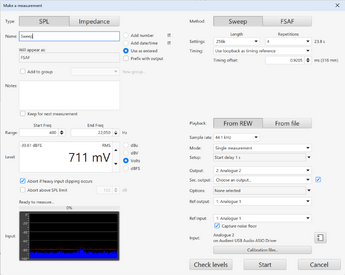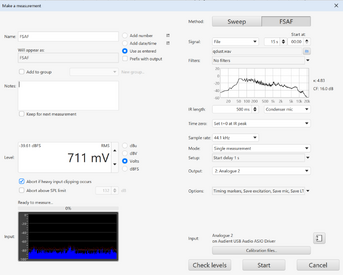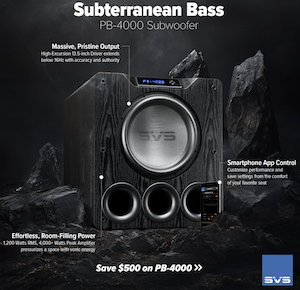If I understand correctly, you are comparing two "identical" files, one is a pre-filtered file, and the other is filtered by REW.
I reproduced your test, however using REW's generator for pink noise. In Audacity, I set HP 20Hz/12dB, and LP 1000Hz/48dB. In REW, I used 20Hz/BU12 and 1000Hz/BU48.
Comparison of measurement has slightly different output level, because of the HP applied to the pre-filtered file, the RMS level of the rest of the spectrum is slightly elevated. Not enough to make a big difference for this comparison, but difference would be even greater had I used 40Hz HP.
The residual produced is rather similar on my end, and I think any difference can be observed by review of the accompanying charts and graphs.
Compare FR - REW is somehow able to extrapolate the entire frequency response of the driver using a pre-filtered audio file that effectively produces no output beyond 3kHz.
Distortion levels are resulting from change in SPL: only, and small difference is observed at 10kHz at the driver breakup.
Reviewing the fundamental, because REW has extrapolated the entire frequency response for the pre-filtered measurement, there is a difference in fundamental present, somehow extrapolate from noise.
To confirm, noise floor is very similar between both measurements.














